Digging small bamboo divisions
>> Wednesday, September 8, 2010 –
bamboo division
The first of my projects this past weekend was to dig some small divisions from one of my in-ground bamboos: Phyllostachys glauca 'Yunzhu'. I've written about large bamboo divisions I've dug before, mainly from my friend Michael's garden, but today will be a little different. Instead of taking huge chunks of a mature bamboo, I'll be taking pretty small culms but trying to get as long a rhizome with them as possible.
There's the plant. It's getting to be quite attractive, and I think next year it will really start taking off. You'll notice that I let the sun shine directly into the lens, which resulted in some pretty lens flares. I normally wouldn't do this, but it seemed to work on this shot. (I've been watching the latest Star Trek movie lately and I think that J.J. Abrams has been wearing off on me.)
Here are the small culms that I'll want to dig up. They came up right at the edge of where I want this bamboo to stop, and I left them alone knowing that I'll want to dig them up later.
I also noticed some escaped rhizomes at this end -- I must have missed them when I rhizome pruned earlier this year. I actually noticed them a couple of months ago but decided to leave them. Some of them must be attached to these small culms, and I'll want the rhizome attached to the culms to be as long as possible.
Why do I want it to be long? A successful division will have a culm (plus leaves), a section of rhizome that has at least one bud, plus roots. Without all three parts, the plant has a much lower chance of surviving. The longer the rhizome section, the more roots, plus the more stored energy for the plant to produce bigger (or more) shoots in the spring.
So the first thing I did was unearth some of the rhizomes, trying to determine if they were connected to the culms or not.
After a bit of digging and yanking, I did my best to figure out which rhizomes went to the culms, then dug them up. As hard as it was to determine how exactly to dig each part, it was harder to get photos that added anything of interest, so here's the cleared area after I was finished digging:
Let's instead focus on the parts of the plant I removed from the ground. I ended up with several rhizome sections that were not attached to culms. I may pot a couple of these up, but we'll come back to these later.
Instead, here's what looks like a good division, with a strong but small culm, decent rhizome section, and plenty of roots:
Upon closer inspection though, all of the rhizome buds were gone:
I'm not sure if something ate them, if I damaged them when digging, or if they just rotted (for some other reason). I do know that without buds, this plant will never get any larger -- it can't grow new rhizomes or produce new shoots, so it's not worth keeping. It's the compost pile for this one!
Here's a rhizome section that has a small leafy shoot on it. This one has some potential, so I may pot it up:
Here's one that has a couple of culms and several rhizomes. Even though the rhizomes are not very long, I'm pretty confident that there are viable buds in there, so this plant will produce more rhizomes and shoots. I'll pot it up!
Finally, this is the best division, as it has a couple of culms plus a long section of rhizome. I'll pot this up first since it's definitely the most promising plant:
Potting is relatively easy -- just find a pot that's just large enough to fit the rhizome (wrapped around the pot's inner edge a few times) and be careful not to damage any of the buds:
Fill with potting soil, making sure to get soil around and under the whole plant, and this one is done:
I'll do the same for the other decent piece, which is easier since it doesn't require any rhizome circling:
After these two I've decided not to bother potting up the bare rhizome pieces. Brad from Needmore Bamboo says that he doesn't have good results with bare rhizomes dug at this time of the year (spring-dug rhizomes, before the plant shoots, are much better). I'll trust his experience and not waste any time or potting mix on these, especially since it means less work.
I will take the rhizome section that has the small leafy shoot and bury that in some loose soil in the backyard. If it survives and ends up producing any new shoots in the spring I'll pull it out of the ground and pot it up then. No pot or soil wasted, and it only takes a couple of minutes.
So that's how I got a couple of new pots of Phyllostachys glauca 'Yunzhu' and cleaned up that one end of the plant. Those small, floppy culms were really annoying and detracting from the look of the bamboo, plus the rhizomes on that end were six feet out of bounds. A hint about tomorrow's project: it involves bamboo too.

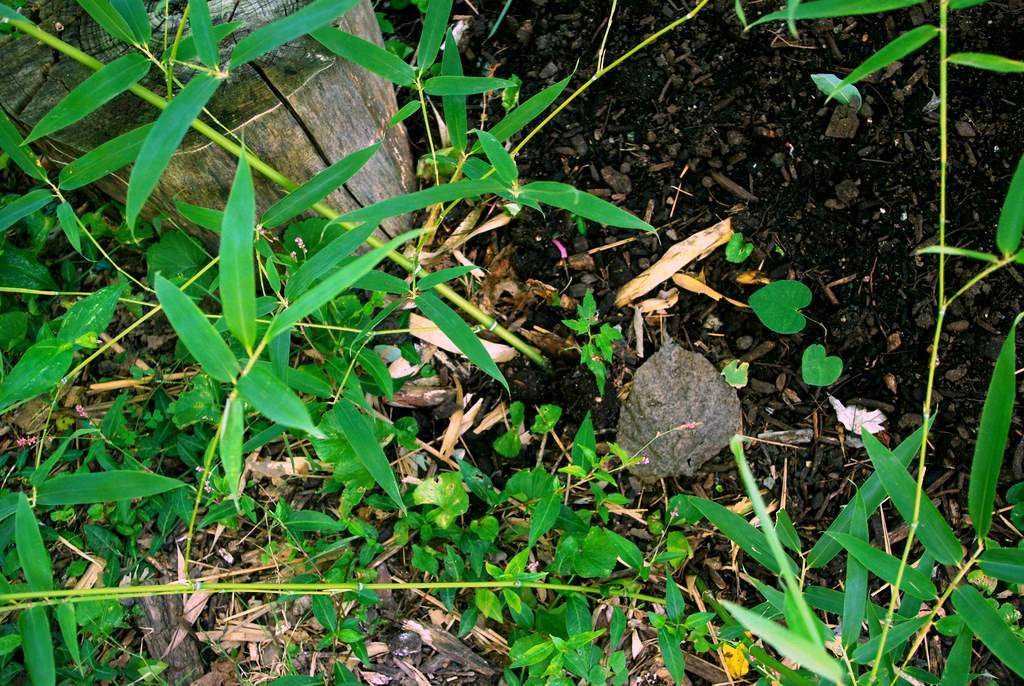
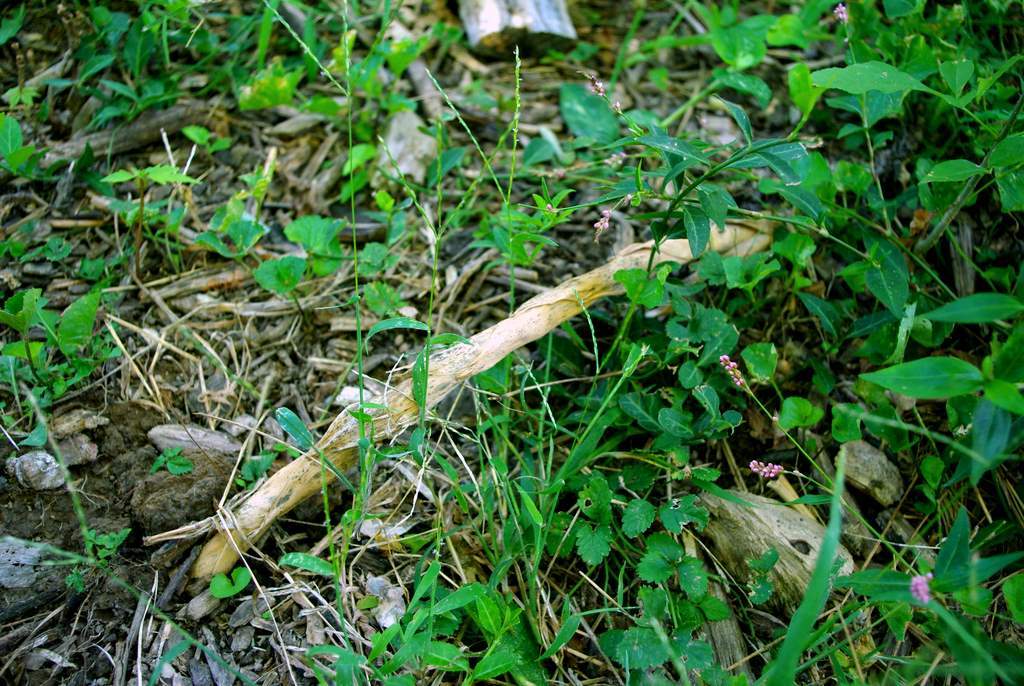
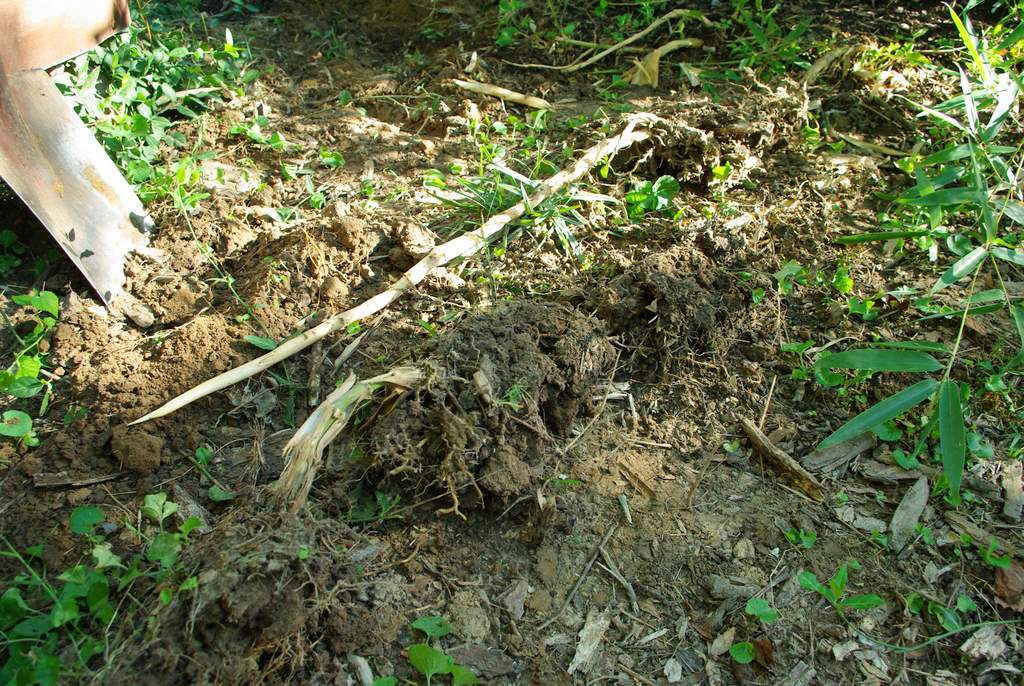
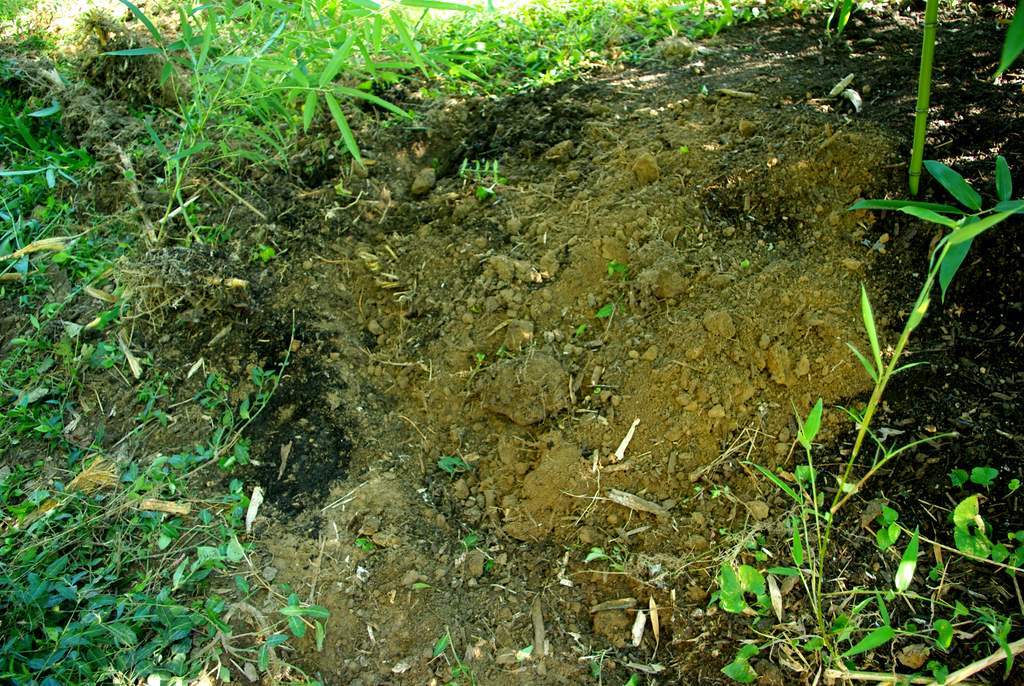
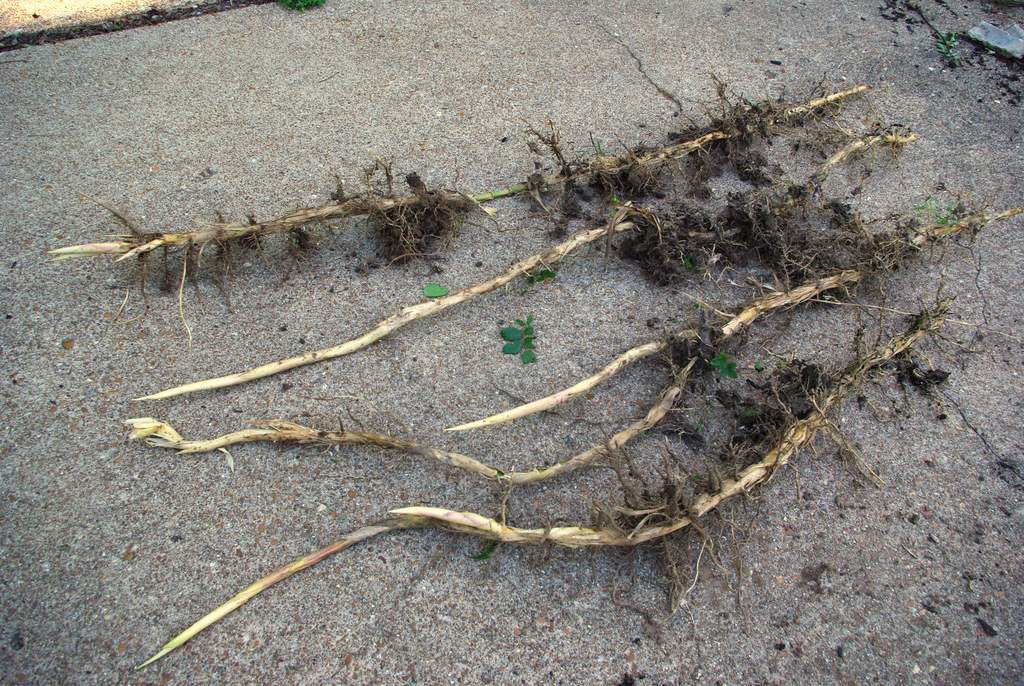

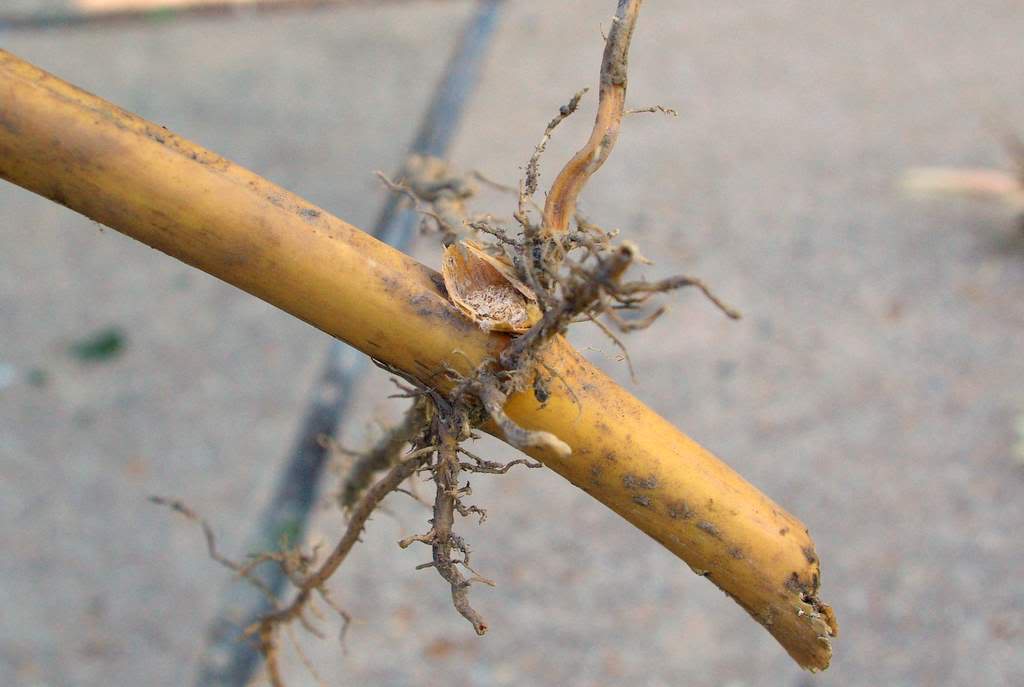
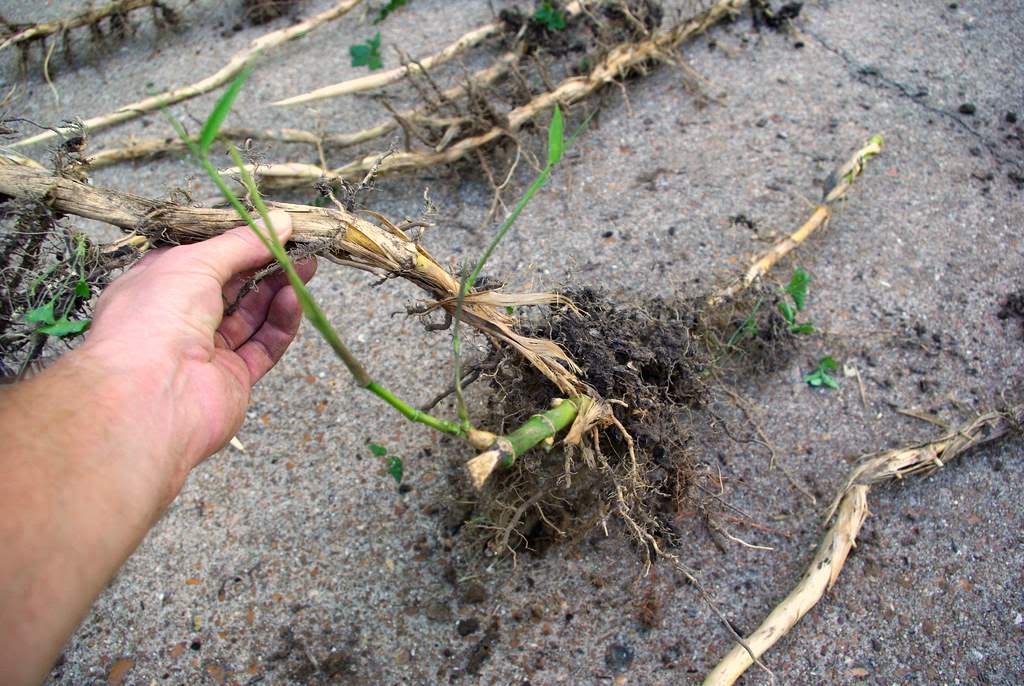
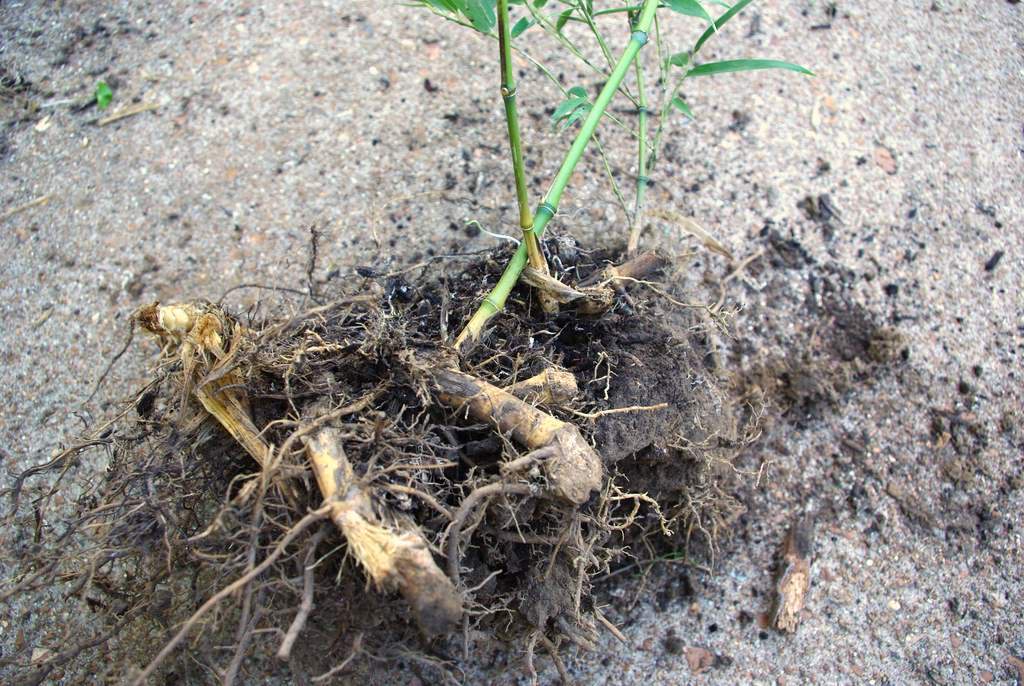
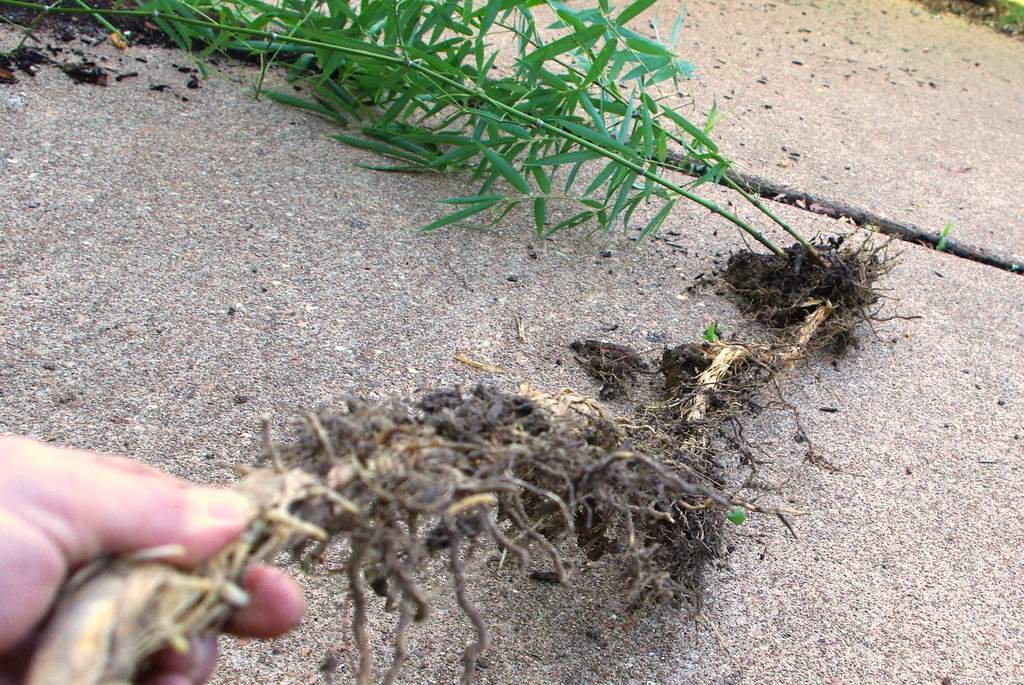







Looks like those should establish well enough to shoot next year. I've been putting all my divisions in the greenhouse to speed up the process.